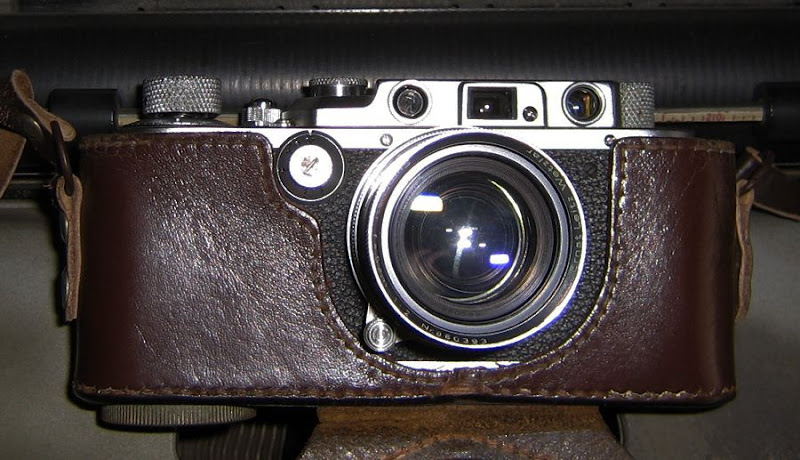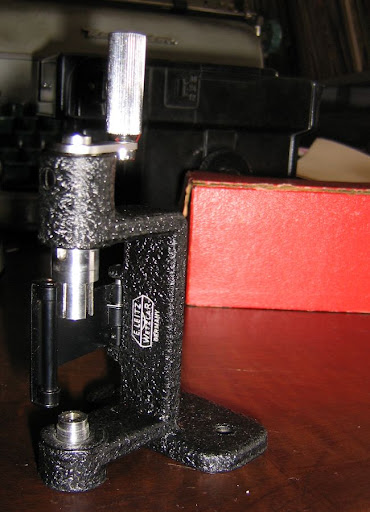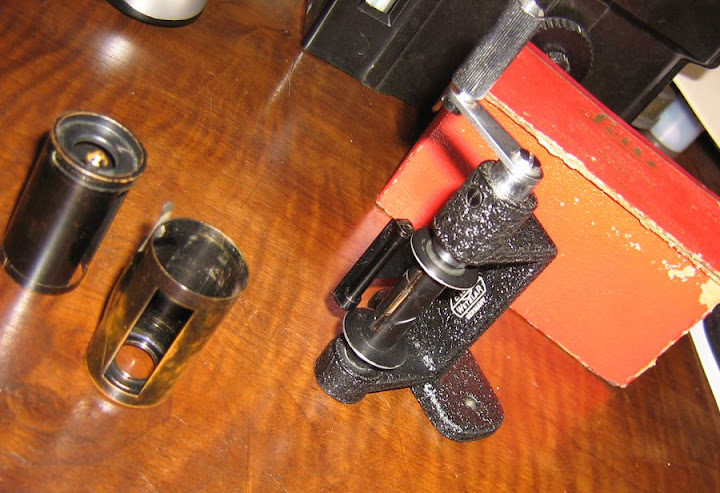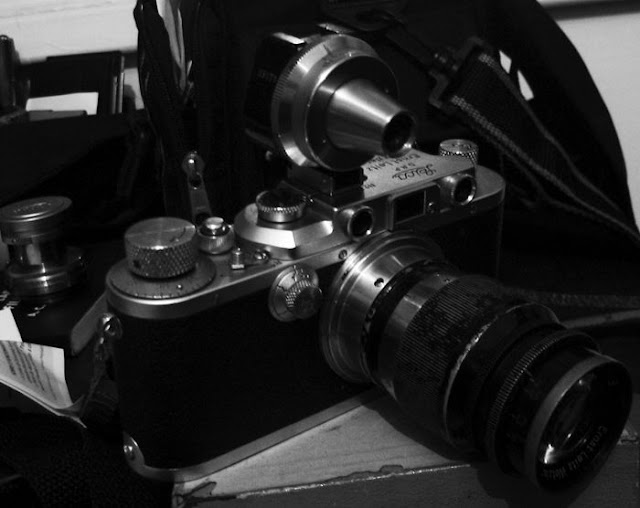martinsantos
Practically Family
- Messages
- 595
- Location
- São Paulo, Brazil
I really don't know if this is the correct place, or the Golden Era forum. My idea is to show part of an whole system of photography, the Leitz system. We always think first, about photrography in 30s and 40s, in those Speed Graphic. And forget about this genuine product of design of those days.
The first Leica appeared in 1924. Soon became a huge sucess, and the acessories in new developments appeared. It wasn't a "luxury" camera, but a practical, efficient one. And almost indestrutible.

Here is one Leica model III, from 1937 (the lens is a Summitar from 1950).
Just a few very obscure cameras used 35mm (cine) film for photography those days. So all equipment - to develop film, enlargers, film cassetes, etc, must be created. And so they did.
Cine film could be bought at 40s in special cassetes, like today. But is much cheaper (more than 50%) to buy bulk film and reload in the special Leitz cassetes. As today, you culd buy film in 100 feet spools or 400 or 800 feet (this for movie cameras). The old Double X Pan from Kodak is still manufactured in this way.
The handling must be in the dark. But the cassete become absolutely light-proof. It opens when you lock the camera, and vice-versa. This little winder is to help handling the film. And no chance to scratch the film!!

The spool is in its place, and together the two parts on the cassete. Each come inside the other.

The first Leica appeared in 1924. Soon became a huge sucess, and the acessories in new developments appeared. It wasn't a "luxury" camera, but a practical, efficient one. And almost indestrutible.

Here is one Leica model III, from 1937 (the lens is a Summitar from 1950).
Just a few very obscure cameras used 35mm (cine) film for photography those days. So all equipment - to develop film, enlargers, film cassetes, etc, must be created. And so they did.
Cine film could be bought at 40s in special cassetes, like today. But is much cheaper (more than 50%) to buy bulk film and reload in the special Leitz cassetes. As today, you culd buy film in 100 feet spools or 400 or 800 feet (this for movie cameras). The old Double X Pan from Kodak is still manufactured in this way.
The handling must be in the dark. But the cassete become absolutely light-proof. It opens when you lock the camera, and vice-versa. This little winder is to help handling the film. And no chance to scratch the film!!

The spool is in its place, and together the two parts on the cassete. Each come inside the other.

Last edited:












